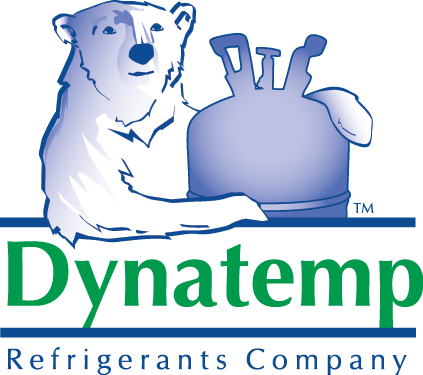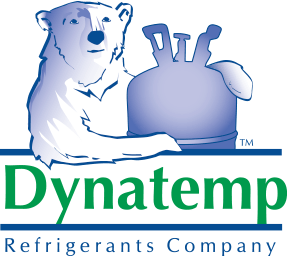
Tariffs, trade wars, anti-dumping, Kigali, international regulations, and climate change. These are just a few of the factors affecting the current refrigerant industry to some extent. Note that none of them include weather, which has traditionally been the driving force behind refrigerant demand and price volatility. Over the last several years, we have seen each of these factors impact refrigerants in various ways, and to varying degrees. In looking ahead to Summer ‘19, we will look at each of these factors and their potential impacts. Please note that these are opinions, and should be taken into consideration as such.
As we move past the halfway point of the Trump Administration’s first term, we have seen the focus shift to trade and international sanctions lately. For the refrigerant industry, this has meant increased prices on steel cylinders imported from China, as well as the looming threat of tariffs on the remaining products produced in China and imported to the US, including component refrigerants. Put together with the current anti-dumping duties already in place for packaged HFC’s from China, there is potential for a major disruption in the market this year. Component refrigerants (R125, R32, etc) that were originally excluded from the previous round of anti-dumping duties are now on the list of potentially tariffed products if the trade war with China continues to escalate. As you know, the vast majority of the global supply of HFC’s originates in China. This would result in increased cost of refrigerant(s) from the PRC, whether imported in bulk to be packaged in the US, or brought in already packaged. As we have seen in the past, China is willing to manipulate the yuan to mitigate some of the effects of the tariffs, but a 25% proposed tariff would likely be too great to offset.
As the ripple effects of the US backing out of the 2016 Paris Agreement are still becoming clear, what has become clear is the intent of the rest of the world (184 States, plus the EU have signed on, with over 70 countries ratifying Kigali already). While the HFC phaseout schedule outlined in Kigali is more gradual than the HCFC phasedown schedule, the global desire for climate change regulation is growing. In fact, for the second year in a row, the 2019 HARDI Congressional Fly-In focused on HFC regulations and the entire industry’s support of the measure. From OEM’s to wholesale distributors, the vast majority of US businesses approve of, and are lobbying for, the ratification of Kigali.
In the meantime, the California Air Resources Board (CARB) has proposed legislation that would take the HFC phasedown from Kigali, and add more aggressive targets in order to meet climate change targets. A coalition of other states have joined forces with California, which would make implementation a messy affair, to say the least. Without clear Federal guidelines, a patchwork of regulations governing acceptable refrigerants and equipment will paralyze the industry. In addition to meeting global climate change goals, the Kigali Amendment (and CARB regulations) have been projected to have a net positive effect on the overall economy and jobs market of over $10B and 33,000, respectively. It will be important to monitor the movement of legislation, and the potential ratification of Kigali as the season wears on.
Finally, on to weather and climate. While two very different things, both obviously have an effect on the refrigerant industry. Firstly, weather. In the short term, predictive models from NOAA and the National Weather Service show increased chances for hotter-than-normal temperatures and normal to less-than-normal rainfall across much of the perimeter of the country this summer. While it looks like a continuation of the wet Spring for the MidWest, the rest of the country could experience a hot, dry summer. Generally, we would expect this to lead to a rise in refrigerant prices as demand ramps up.
As this relates to climate change, we can see clear trends in the overall average temperatures rising across the globe. While environmentalists have been sounding the alarm for years, what we’re witnessing now is a confluence of industry and activism that is driving major changes across the globe. In the medium-long term, these concerns are going to create rifts between countries/economies that have embraced reform, and those that have not. Low-GWP alternatives to current refrigerants will become more and more popular, as will natural refrigerants, which boast 0 GWP. Standards and regulations are coming into focus for mildly flammable (A2L) and flammable (R600, R290, etc.) refrigerants. As global pressure to make a change mounts, medium-term replacements are going to experience a surge in popularity until extremely low GWP refrigerants are widely available.
Over the last decade, we have seen accelerated change in the refrigerant landscape and markets. This volatile market and unclear future will continue until many of the above issues are resolved. Do your part today by becoming involved in decision-making and policy proposals. Ask your refrigerant distributor about their plans for reclamation and alternative refrigerants. Talk to OEM’s about equipment changes and plan for the future. The status quo is not holding anymore, and if you want to thrive in these uncertain times, learn as much as you can and make your voice heard. As always, for more information or to ask questions, please let us know at
info@dynatempintl.com.
Sincerely,
Will Gresham
Executive Vice President
Dynatemp Refrigerants

 Moving into the second quarter of 2018, there are several questions regarding the refrigerant market that continue to weigh heavily on the mind of the refrigerant industry as we head into cooling season for the majority of the U.S. From further reductions in R22 allocations, to the complicated political landscape, every aspect of our business is affected in different ways, and to varying degrees, by the many outside forces at work.
Moving into the second quarter of 2018, there are several questions regarding the refrigerant market that continue to weigh heavily on the mind of the refrigerant industry as we head into cooling season for the majority of the U.S. From further reductions in R22 allocations, to the complicated political landscape, every aspect of our business is affected in different ways, and to varying degrees, by the many outside forces at work.